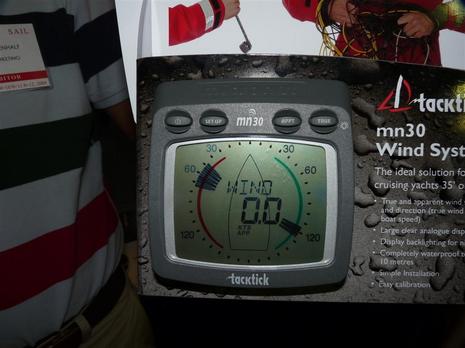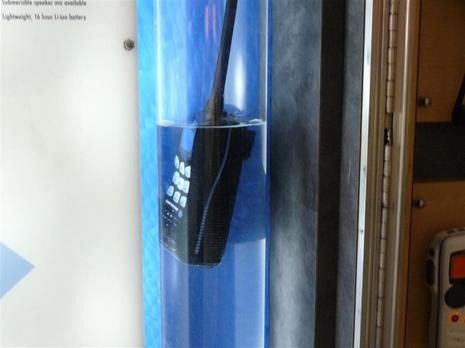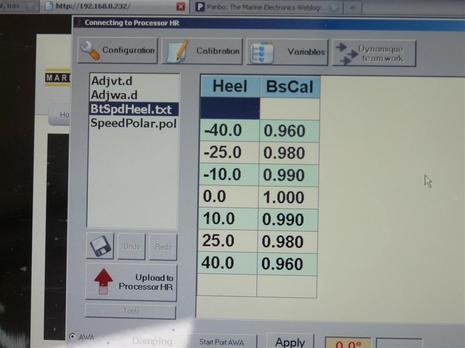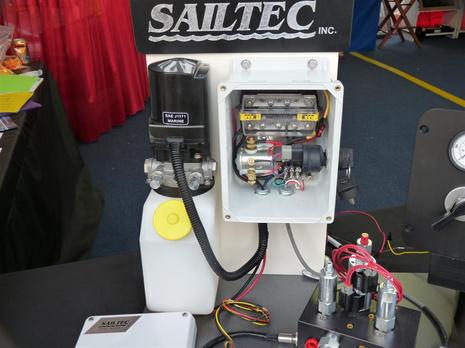Cruising with Dan in Annapolis
 Guest Entry by Dan Corcoran
Guest Entry by Dan Corcoran
My family and I took a road trip to the Annapolis Boat show this weekend, where I took up a challenge from Ben to write on some products I find, and do so with a conservation of words (rather than my normal verbose style). Disclaimer: These are not my normal on the water reviews, everything appearing below has not been evaluated or researched by your humble correspondent in the slightest bit!
As with most of this show, new news was hard to come by. TackTick was no exception. The picture above is of the 12volt (rather than solar) model of their wind display. At a lower cost than solar it otherwise minimizes wiring using RF to communicate with transducers. The real news is that a reworked U.S. dealer distribution network is in place, future transducer products are under development, a product similiar to the T033/mn30 above is on the way for depth and speed, and in the "distant future" we can expect a Suunto watch (Suunto acquired Tack Tick) that can similarly display wireless transducer information. Also on display were various products submerged, and a new Suunto boat compass, a direct result of the merger.

ICOM's booth takes water immersion demonstrations up a notch from TackTick, showcasing their products in moving water. The handheld above is the closest ICOM has to a new product on display in Annapolis. The IC-M36 has a feature in which the microphone and speaker volume automatically adjusts in relation to nearby ambient noise (engine noise, breaking surf, etc.) so your conversations are clearer. I see this as useful for setting the volume as low as possible avoiding my daughter complaining about my monitoring 16 while underway, which disturbs her music. After a little pumping, I learned ICOM has a finished product into the FCC with a full feature AIS B transceiver capability. Don't expect it soon, they are on their second submission already and complained the FCC is "holding their product up." I understand a USA release is over a year away (it's already for sale in Europe). Beware, when it comes out this product will be between the M504 and enormous (8.6" x 4.3") M604 in size, far too large to fit into the existing foot print many of us have for our ship radio's.

Also absent any new product announcements was NKE, which pointed out they didn't need any to maintain their technology lead over competitors with their Regatta Processor. During an hour long visit I learned quite a lot from Bob Congdon (bobc), a repeated commenter / challenger of my product reviews here on Panbo. Bob filled me in on numerous benefits of NKE's offerings and his point of view on why I shouldn't be so impressed with the accuracy of products I have been reviewing. For example, the Regatta Processor can take the output of a paddlewheel or ultrasonic speed transducer (like the one I wrote about here last week) and correct for various types of error most instrument systems don't offer calibration settings for. Pictured above are configuration settings to correct for boat speed at different angles of heel, as much as 4% of error in this example for a boat heeled 40 degrees. A correct boat speed also significantly improves true wind calculations.

At the Raymarine booth I headed straight for the E-Series Widescreen Ben wrote about here. My first use was to investigate if a keyboard would appear on the hybrid touch interface for naming waypoints (a fair guess that turned out correct). Next I checked out the funny control in the bottom right corner. The outside black ring on the control rotates to function like the thumb knob on the original e-series, the middle silver surface of the control functions like a joystick to move the cursor (useful for fine tuning after you finger touched a map location), while the center is an OK button function. Well done! Forgive my enthusiasm over this small point, but rotary controls feel natural to me and just like I desire them on my home stereo components, it's great that it made it into the layout of the new e-series.

While it was slim pickings for new tech at this show, I did come across a just released product that has believable claims of being smaller, lighter (4x reduction), cheaper (by a factor of 5). I had a little difficulty understanding from SAILTEC why that matters, but finally got it. Can you guess what this new product does and its potential use on large sail or power boat?

 Share
Share
I had a good idea what the SAILTEC product was for until you mentioned "power boat"...